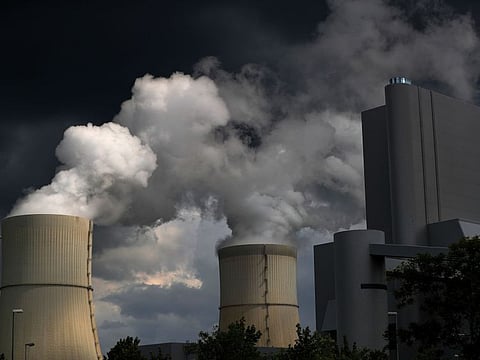Achieving reduction in oil and gas emissions will require a $600 billion expenditure, says IEA
Tackling methane emissions is the most important measure to limit emissions

Paris: Around $600 billion spending is required this decade to achieve the cut in oil and gas emissions, according to a new IEA report.
This is only a fraction of the record windfall income that oil and gas producers accrued in 2022. Many of the measures also generate additional income streams by avoiding the use or waste of gas meaning they can quickly recoup the upfront spending required. Oil and gas operations account for nearly 15 per cent of energy-related greenhouse gas emissions today and the industry has the ability and resources to cut them quickly and cost effectively.
A new IEA report examines the immediate steps the oil and gas industry needs to take to significantly reduce its emissions footprint and help move the world closer to meeting its international energy and climate goals.
The new report - Emissions from Oil and Gas Operations in Net Zero Transitions - aims to inform discussions in the run-up to the COP28 Climate Change Conference in Dubai in November. It is part of a broader World Energy Outlook special report being released this year examining the role of the oil and gas industry in net zero transitions.
In the International Energy Agency’s Net Zero Emissions by 2050 Scenario, the emissions intensity of these activities falls by 50 per cent by the end of the decade. Combined with the reductions in oil and gas consumption in this scenario, this results in a 60 per cent reduction in emissions from oil and gas operations to 2030.
The report identifies five key levers to achieve this reduction, including: tackling methane emissions; eliminating all non-emergency flaring; electrifying upstream facilities with low-emissions electricity; equipping oil and gas processes with carbon capture, utilisation and storage; and expanding the use of low-emissions hydrogen in refineries.
Important measure to limit emissions
Tackling methane emissions is the most important measure to limit emissions from the industry’s operations. It is also one of the most cost effective and impactful measures to cut emissions across the economy and limit near term global warming. Earlier this year, the IEA released the latest update to its Global Methane Tracker, which found that methane emissions remained stubbornly high in 2022 despite the headwinds of the global energy crisis.
Oil and gas companies accounting for just under half of global oil production today have announced plans to reduce emissions from their operations. A far broader coalition - with much more ambitious targets - is needed to achieve meaningful reductions across the oil and gas industry and beyond.
Sign up for the Daily Briefing
Get the latest news and updates straight to your inbox


